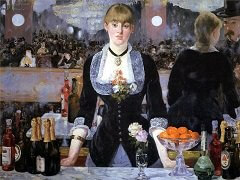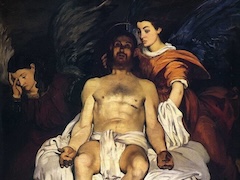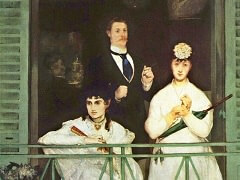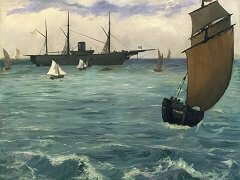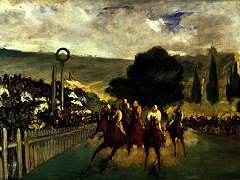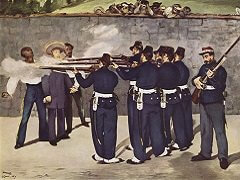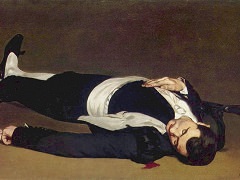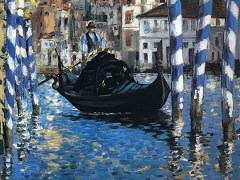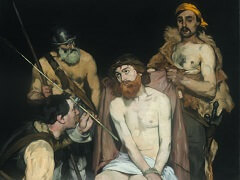Departure of the Folkestone Boat, 1869 by Édouard Manet

The freedom of execution of this painting approaches abstract techniques. Everything is suggested by spots of color that flicker against the calm expanse of the background. The palette is still finely balanced between black and white, with highlights in blue, red, and yellow, set offby the blue-green of the sea beneath the clear sky. We are now familiar with Manet's technique; it is difficult for us to imagine how unconventional and impudent his manner of sketching figures with a few brush strokes once seemed. Conformists simply could not understand that what appeared formless at close quarters took on relief and detail at a distance. It is enough simply to look closely at this picture and then to move away from it to be impressed by Manet's incomparable power of suggestion, in which he excelled every other painter of his day.
Manet was improvising in this picture. Twenty years before he had spent several months on a training ship and was f amiliar with the sea and ships. He seems to have forgotten much since then. I doubt that a captain ever stood on his bridge quite as Manet has shown here. At the left of the group of passengers we can see Mme Manet, holding a parasol, and Leon Koella-Leenhoff, in a felt hat with a feather.
The picture was painted from the window of the Folkestone Hotel in Boulogne. Manet stayed there a week without doing any work. Then, according to Tabarant, he took the steamer across the Channel on a sudden impulse and rushed up to London, where he was welcomed by the painter Alphonse Legros and Mr. Edwards, a connoisseur. Six days later, he returned to Boulogne, "enchanted with London," as he wrote Fantin-Latour. He began to paint, certain henceforth that what the realists in Paris regarded as his faults constituted in fact his true personality. He painted seven pictures, of which this was one. The sketch for it is in the Oskar Reinhart collection in Winterthur. Manet sold this canvas to Durand-Ruel in 1872.

